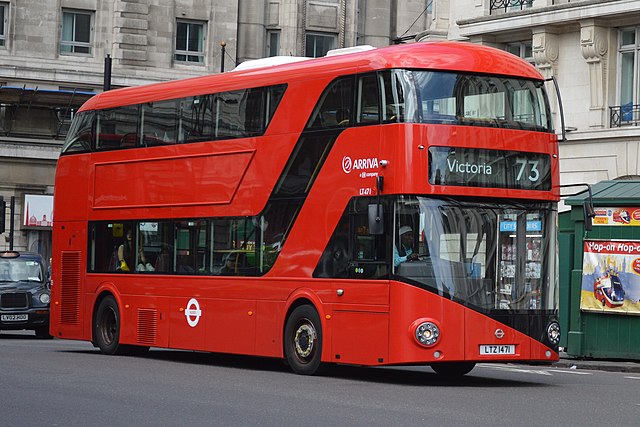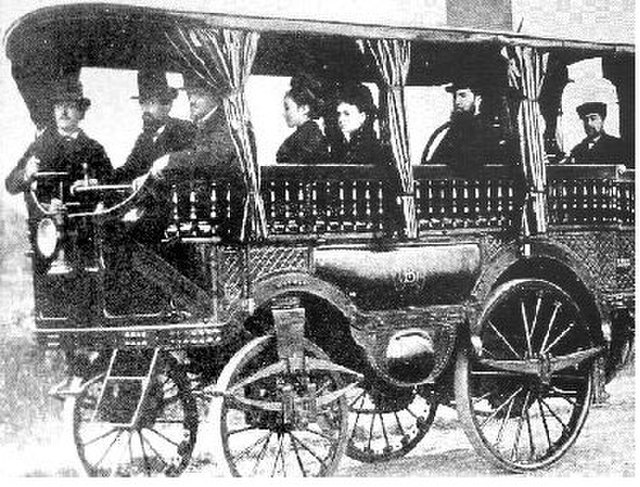A coachbuilder or body-maker is a person or company who manufactures bodies for passenger-carrying vehicles. Coachwork is the body of an automobile, bus, horse-drawn carriage, or railway carriage. The word "coach" was derived from the Hungarian town of Kocs. A vehicle body constructed by a coachbuilder may be called a "coachbuilt body" or "custom body".
Ash body frame ready to be clad in metal mounted on a Morgan 4/4 chassis
The coachbuilder's wooden frame fixed to its replica Bentley chassis
Original 1930 Bentley Speed Six Gurney Nutting coupé
Portugal 18th century
A bus is a road vehicle that carries significantly more passengers than an average car or van, but less than the average rail transport. It is most commonly used in public transport, but is also in use for charter purposes, or through private ownership. Although the average bus carries between 30 and 100 passengers, some buses have a capacity of up to 300 passengers. The most common type is the single-deck rigid bus, with double-decker and articulated buses carrying larger loads, and midibuses and minibuses carrying smaller loads. Coaches are used for longer-distance services. Many types of buses, such as city transit buses and inter-city coaches, charge a fare. Other types, such as elementary or secondary school buses or shuttle buses within a post-secondary education campus, are free. In many jurisdictions, bus drivers require a special large vehicle licence above and beyond a regular driving licence.

A New Routemaster double-decker bus, operating for Arriva London on London Buses route 73 (2015)
A New Flyer trolleybus operated by the Toronto Transit Commission in 1987
An early horse-drawn omnibus from mid-nineteenth century
Amédée Bollée's L'Obéissante (1875)








